66 papers:
 MSR-2015-SahaLKP #debugging #question
MSR-2015-SahaLKP #debugging #question- Are These Bugs Really “Normal”? (RKS, JL, SK, DEP), pp. 258–268.
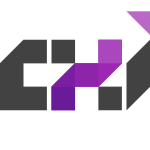 CHI-2015-EslamiRVAVKHS #algorithm #quote #reasoning
CHI-2015-EslamiRVAVKHS #algorithm #quote #reasoning- “I always assumed that I wasn’t really that close to [her]”: Reasoning about Invisible Algorithms in News Feeds (ME, AR, KV, AA, AV, KK, KH, CS), pp. 153–162.
 CSCW-2015-BiehlAD #communication #comprehension
CSCW-2015-BiehlAD #communication #comprehension- Not Really There: Understanding Embodied Communication Affordances in Team Perception and Participation (JTB, DA, AD), pp. 1567–1575.
 ICSE-v1-2015-YskoutSJ #design #question #security
ICSE-v1-2015-YskoutSJ #design #question #security- Do Security Patterns Really Help Designers? (KY, RS, WJ), pp. 292–302.
 DATE-2014-RuhrmairSB #how
DATE-2014-RuhrmairSB #how- Special session: How secure are PUFs really? On the reach and limits of recent PUF attacks (UR, US, WB), pp. 1–4.
 ITiCSE-2014-KothiyalMI #learning #question #scalability
ITiCSE-2014-KothiyalMI #learning #question #scalability- Think-pair-share in a large CS1 class: does learning really happen? (AK, SM, SI), pp. 51–56.
 ICSME-2014-PalombaBPOL #case study #developer #smell
ICSME-2014-PalombaBPOL #case study #developer #smell- Do They Really Smell Bad? A Study on Developers’ Perception of Bad Code Smells (FP, GB, MDP, RO, ADL), pp. 101–110.
 IFL-2014-AmorimGAH #linear #type checking
IFL-2014-AmorimGAH #linear #type checking- Really Natural Linear Indexed Type Checking (AAdA, MG, EJGA, JH), p. 5.
 CHI-2014-AhmaniemiKH #gesture #question #what
CHI-2014-AhmaniemiKH #gesture #question #what- What is a device bend gesture really good for? (TTA, JK, MH), pp. 3503–3512.
 HCI-AS-2014-KimC #what
HCI-AS-2014-KimC #what- The Gap between What a Service Provider Shows Off and What Users Really Watch (DK, JC), pp. 710–720.
 CIKM-2014-GrbovicHKM #category theory #email #how
CIKM-2014-GrbovicHKM #category theory #email #how- How Many Folders Do You Really Need?: Classifying Email into a Handful of Categories (MG, GH, ZSK, YM), pp. 869–878.
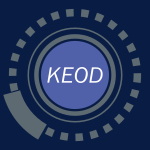 KEOD-2014-Aalst #mining #people #process #what
KEOD-2014-Aalst #mining #people #process #what- No Knowledge Without Processes — Process Mining as a Tool to Find Out What People and Organizations Really Do (WMPvdA), pp. 1–11.
 SEKE-2014-MaranAO #database #ontology #question #ubiquitous
SEKE-2014-MaranAO #database #ontology #question #ubiquitous- Are The Integrations Between Ontologies and Databases Really Opening the Closed World in Ubiquitous Computing ? (VM, IA, JPMdO), pp. 453–458.
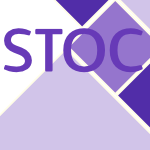 STOC-2013-ElkinS
STOC-2013-ElkinS- Optimal euclidean spanners: really short, thin and lanky (ME, SS), pp. 645–654.
 CHI-2013-KnijnenburgKJ #privacy #question
CHI-2013-KnijnenburgKJ #privacy #question- Preference-based location sharing: are more privacy options really better? (BPK, AK, HJ), pp. 2667–2676.
 MoDELS-2013-WhittleHRBH #industrial #modelling #problem #question #tool support
MoDELS-2013-WhittleHRBH #industrial #modelling #problem #question #tool support- Industrial Adoption of Model-Driven Engineering: Are the Tools Really the Problem? (JW, JH, MR, HB, RH), pp. 1–17.
 MoDELS-2013-WhittleHRBH #industrial #modelling #problem #question #tool support
MoDELS-2013-WhittleHRBH #industrial #modelling #problem #question #tool support- Industrial Adoption of Model-Driven Engineering: Are the Tools Really the Problem? (JW, JH, MR, HB, RH), pp. 1–17.
 ECOOP-2013-TrudelFNM #automation #object-oriented #re-engineering #scalability
ECOOP-2013-TrudelFNM #automation #object-oriented #re-engineering #scalability- Really Automatic Scalable Object-Oriented Reengineering (MT, CAF, MN, BM), pp. 477–501.
 PPDP-2013-AntoyJ #question
PPDP-2013-AntoyJ #question- Are needed redexes really needed? (SA, AJ), pp. 61–71.
 ICSE-2013-Northrop #case study #matter #scalability #years after
ICSE-2013-Northrop #case study #matter #scalability #years after- Does scale really matter? ultra-large-scale systems seven years after the study (keynote) (LMN), p. 857.
 ICSE-2013-PotaninDN #alias #cost analysis
ICSE-2013-PotaninDN #alias #cost analysis- Are your incoming aliases really necessary? counting the cost of object ownership (AP, MD, JN), pp. 742–751.
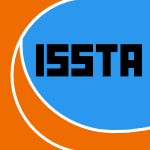 ISSTA-2013-FraserSMAP #automation #generative #question #testing
ISSTA-2013-FraserSMAP #automation #generative #question #testing- Does automated white-box test generation really help software testers? (GF, MS, PM, AA, FP), pp. 291–301.
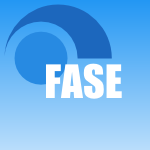 FASE-2012-GuimaraesS #integration
FASE-2012-GuimaraesS #integration- Making Software Integration Really Continuous (MLG, ARS), pp. 332–346.
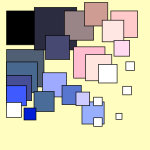 SCAM-2012-VinjuG #complexity #control flow #metric #what
SCAM-2012-VinjuG #complexity #control flow #metric #what- What Does Control Flow Really Look Like? Eyeballing the Cyclomatic Complexity Metric (JJV, MWG), pp. 154–163.
 CHI-2012-PetrieP #comparison #interactive #problem #usability #what
CHI-2012-PetrieP #comparison #interactive #problem #usability #what- What do users really care about?: a comparison of usability problems found by users and experts on highly interactive websites (HP, CP), pp. 2107–2116.
 ITiCSE-2011-Mirolo #recursion
ITiCSE-2011-Mirolo #recursion- Is iteration really easier to master than recursion: an investigation in a functional-first CS1 context (CM), p. 362.
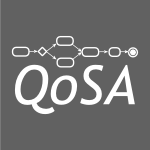 QoSA-2010-BirkmeierO #architecture #development #diagrams #empirical #process #uml #usability
QoSA-2010-BirkmeierO #architecture #development #diagrams #empirical #process #uml #usability- Is BPMN Really First Choice in Joint Architecture Development? An Empirical Study on the Usability of BPMN and UML Activity Diagrams for Business Users (DB, SO), pp. 119–134.
 CSCW-2010-NaamanBL #social
CSCW-2010-NaamanBL #social- Is it really about me?: message content in social awareness streams (MN, JB, CHL), pp. 189–192.
 RE-2010-Panis #deployment #requirements #traceability
RE-2010-Panis #deployment #requirements #traceability- Successful Deployment of Requirements Traceability in a Commercial Engineering Organization...Really (MCP), pp. 303–307.
 ICSE-2010-GuBHS #debugging #question
ICSE-2010-GuBHS #debugging #question- Has the bug really been fixed? (ZG, ETB, DJH, ZS), pp. 55–64.
 HCI-NT-2009-Lew #experience #what
HCI-NT-2009-Lew #experience #what- What Do Users Really Do? Experience Sampling in the 21st Century (GSL), pp. 314–319.
 DAC-2008-KuehlmannBCRMN #verification
DAC-2008-KuehlmannBCRMN #verification- Verifying really complex systems: on earth and beyond (AK, AB, DEC, RAR, RMM, AN), pp. 552–553.
 SIGMOD-2008-AbadiMH #how #question
SIGMOD-2008-AbadiMH #how #question- Column-stores vs. row-stores: how different are they really? (DJA, SM, NH), pp. 967–980.
 VLDB-2008-DittrichBS #how #question
VLDB-2008-DittrichBS #how #question- Dwarfs in the rearview mirror: how big are they really? (JD, LB, MAVS), pp. 1586–1597.
 ITiCSE-2008-NorrisBFRR #developer #how #named
ITiCSE-2008-NorrisBFRR #developer #how #named- ClockIt: collecting quantitative data on how beginning software developers really work (CN, EFB, JBFJ, KR, JR), pp. 37–41.
 ICSM-2008-BettenburgPZK #debugging #harmful #question
ICSM-2008-BettenburgPZK #debugging #harmful #question- Duplicate bug reports considered harmful ... really? (NB, RP, TZ, SK), pp. 337–345.
 ICSE-2008-RiccaPTTCV #evolution
ICSE-2008-RiccaPTTCV #evolution- Are fit tables really talking?: a series of experiments to understand whether fit tables are useful during evolution tasks (FR, MDP, MT, PT, MC, CAV), pp. 361–370.
 ISSTA-2008-BalzarottiBCFKRVV #security #testing
ISSTA-2008-BalzarottiBCFKRVV #security #testing- Are your votes really counted?: testing the security of real-world electronic voting systems (DB, GB, MC, VF, RAK, WKR, FV, GV), pp. 237–248.
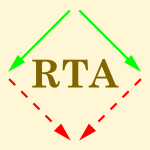 RTA-2008-UrbanZ #proving
RTA-2008-UrbanZ #proving- Revisiting Cut-Elimination: One Difficult Proof Is Really a Proof (CU, BZ), pp. 409–424.
 SAC-2006-ReynosoGPM #comprehension #ocl #question
SAC-2006-ReynosoGPM #comprehension #ocl #question- Does object coupling really affect the understanding and modifying of OCL expressions? (LR, MG, MP, MEM), pp. 1721–1727.
 DAC-2005-Rossi #design #formal method #question #scalability #verification
DAC-2005-Rossi #design #formal method #question #scalability #verification- Can we really do without the support of formal methods in the verification of large designs? (UR), pp. 672–673.
 ITiCSE-2005-HabermanAG #algorithm
ITiCSE-2005-HabermanAG #algorithm- Is it really an algorithm: the need for explicit discourse (BH, HA, DG), pp. 74–78.
 ITiCSE-2005-SternMH #how #student
ITiCSE-2005-SternMH #how #student- You can lead a horse to water: how students really use pedagogical software (LS, SM, RH), pp. 246–250.
 DATE-DF-2004-Thiel #validation
DATE-DF-2004-Thiel #validation- Have I Really Met Timing? — Validating PrimeTime Timing Reports with Spice (TT), pp. 114–119.
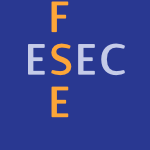 FSE-2004-Wolf #question #re-engineering #security
FSE-2004-Wolf #question #re-engineering #security- Is security engineering really just good software engineering? (ALW), p. 1.
 ITiCSE-2003-EkateriniSP #education #learning #problem
ITiCSE-2003-EkateriniSP #education #learning #problem- Teaching IT in secondary education through problem-based learning could be really beneficial (GE, BS, GP), p. 243.
 ITiCSE-2002-DagdilelisSE #behaviour #what
ITiCSE-2002-DagdilelisSE #behaviour #what- What they really do?: attempting (once again) to model novice programmers’ behavior (VD, MS, GE), p. 244.
 ICLP-2001-Kowalski #logic #question
ICLP-2001-Kowalski #logic #question- Is Logic Really Dead or Only Just Sleeping? (RAK), pp. 2–3.
 CSEET-2000-DuleyM #education #student
CSEET-2000-DuleyM #education #student- Did We Really Teach That?: A Glimpse of Things Students (Don’t) Learn from Traditional CS1 (RD, SPM), pp. 237–245.
 CHI-2000-FrokjaerHH #correlation #effectiveness #performance #question #usability
CHI-2000-FrokjaerHH #correlation #effectiveness #performance #question #usability- Measuring usability: are effectiveness, efficiency, and satisfaction really correlated? (EF, MH, KH), pp. 345–352.
 ICSE-2000-Edwards #online #quality #question #re-engineering
ICSE-2000-Edwards #online #quality #question #re-engineering- Can quality graduate software engineering courses really be delivered asynchronously on-line? (SE), pp. 676–679.
 RE-1999-Easterbrook #how #multi #question
RE-1999-Easterbrook #how #multi #question- How Multi-Disciplinary Is RE (really)? (SME, BN), p. 33–?.
 DAC-1998-IenneG #case study #design #experience #question #standard #tool support
DAC-1998-IenneG #case study #design #experience #question #standard #tool support- Practical Experiences with Standard-Cell Based Datapath Design Tools: Do We Really Need Regular Layouts? (PI, AG), pp. 396–401.
 ICPR-1998-SchechnerK #how #question
ICPR-1998-SchechnerK #how #question- Depth from defocus vs. stereo: how different really are they? (YYS, NK), pp. 1784–1786.
 HCI-SEC-1997-ShirabeB #3d #game studies #interface #question #realtime
HCI-SEC-1997-ShirabeB #3d #game studies #interface #question #realtime- Do Three Dimensional Realtime Interfaces Really Play Important Roles? (MS, YB), pp. 849–852.
 CHI-1996-DouglasK #difference #modelling #question
CHI-1996-DouglasK #difference #modelling #question- Do Color Models Really Make a Difference? (SAD, TK), p. 399–?.
 ICML-1995-RaoGS #question
ICML-1995-RaoGS #question- For Every Generalization Action, Is There Really an Equal and Opposite Reaction? (RBR, DFG, WMS), pp. 471–479.
 CSM-1993-ArnoldSW #design #question
CSM-1993-ArnoldSW #design #question- Do Design Records Really Benefit Software Malntenance? (RSA, MS, NW), pp. 234–243.
 KR-1992-Simonet #exception #inheritance
KR-1992-Simonet #exception #inheritance- RS Theory: A Really Skeptical Theory of Inheritance with Exceptions (GS), pp. 615–626.
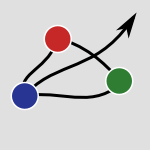 HT-1989-Nielsen #hypermedia #matter #usability
HT-1989-Nielsen #hypermedia #matter #usability- The Matters that Really Matter for Hypertext Usability (JN), pp. 239–248.
 ICSE-1989-Boehm #generative #process #what
ICSE-1989-Boehm #generative #process #what- What We Really Need Are Process Model Generators (BWB), p. 397.
 ICALP-1988-KirschenhoferPS
ICALP-1988-KirschenhoferPS- Do We Really Need to Balance Patricia Trees? (Extended Abstract) (PK, HP, WS), pp. 302–316.
 POPL-1986-BarringerKP #concurrent #logic
POPL-1986-BarringerKP #concurrent #logic- A Really Abstract Concurrent Model and its Temporal Logic (HB, RK, AP), pp. 173–183.
 DAC-1984-Smith #layout #tool support #what
DAC-1984-Smith #layout #tool support #what- Basic turorial layout tools — what really is there (RS), p. 219.
 ICSE-1978-Stucki #how #question
ICSE-1978-Stucki #how #question- How Software is Really Engineered? (LGS), p. 84.
 ICSE-1976-BellT #problem #question #requirements
ICSE-1976-BellT #problem #question #requirements- Software Requirements: Are They Really a Problem? (TEB, TAT), pp. 61–68.
 MSR-2015-SahaLKP #debugging #question
MSR-2015-SahaLKP #debugging #question CHI-2015-EslamiRVAVKHS #algorithm #quote #reasoning
CHI-2015-EslamiRVAVKHS #algorithm #quote #reasoning CSCW-2015-BiehlAD #communication #comprehension
CSCW-2015-BiehlAD #communication #comprehension ICSE-v1-2015-YskoutSJ #design #question #security
ICSE-v1-2015-YskoutSJ #design #question #security DATE-2014-RuhrmairSB #how
DATE-2014-RuhrmairSB #how ITiCSE-2014-KothiyalMI #learning #question #scalability
ITiCSE-2014-KothiyalMI #learning #question #scalability ICSME-2014-PalombaBPOL #case study #developer #smell
ICSME-2014-PalombaBPOL #case study #developer #smell IFL-2014-AmorimGAH #linear #type checking
IFL-2014-AmorimGAH #linear #type checking CHI-2014-AhmaniemiKH #gesture #question #what
CHI-2014-AhmaniemiKH #gesture #question #what HCI-AS-2014-KimC #what
HCI-AS-2014-KimC #what CIKM-2014-GrbovicHKM #category theory #email #how
CIKM-2014-GrbovicHKM #category theory #email #how KEOD-2014-Aalst #mining #people #process #what
KEOD-2014-Aalst #mining #people #process #what SEKE-2014-MaranAO #database #ontology #question #ubiquitous
SEKE-2014-MaranAO #database #ontology #question #ubiquitous STOC-2013-ElkinS
STOC-2013-ElkinS CHI-2013-KnijnenburgKJ #privacy #question
CHI-2013-KnijnenburgKJ #privacy #question MoDELS-2013-WhittleHRBH #industrial #modelling #problem #question #tool support
MoDELS-2013-WhittleHRBH #industrial #modelling #problem #question #tool support MoDELS-2013-WhittleHRBH #industrial #modelling #problem #question #tool support
MoDELS-2013-WhittleHRBH #industrial #modelling #problem #question #tool support ECOOP-2013-TrudelFNM #automation #object-oriented #re-engineering #scalability
ECOOP-2013-TrudelFNM #automation #object-oriented #re-engineering #scalability PPDP-2013-AntoyJ #question
PPDP-2013-AntoyJ #question ICSE-2013-Northrop #case study #matter #scalability #years after
ICSE-2013-Northrop #case study #matter #scalability #years after ICSE-2013-PotaninDN #alias #cost analysis
ICSE-2013-PotaninDN #alias #cost analysis ISSTA-2013-FraserSMAP #automation #generative #question #testing
ISSTA-2013-FraserSMAP #automation #generative #question #testing FASE-2012-GuimaraesS #integration
FASE-2012-GuimaraesS #integration SCAM-2012-VinjuG #complexity #control flow #metric #what
SCAM-2012-VinjuG #complexity #control flow #metric #what CHI-2012-PetrieP #comparison #interactive #problem #usability #what
CHI-2012-PetrieP #comparison #interactive #problem #usability #what ITiCSE-2011-Mirolo #recursion
ITiCSE-2011-Mirolo #recursion QoSA-2010-BirkmeierO #architecture #development #diagrams #empirical #process #uml #usability
QoSA-2010-BirkmeierO #architecture #development #diagrams #empirical #process #uml #usability CSCW-2010-NaamanBL #social
CSCW-2010-NaamanBL #social RE-2010-Panis #deployment #requirements #traceability
RE-2010-Panis #deployment #requirements #traceability ICSE-2010-GuBHS #debugging #question
ICSE-2010-GuBHS #debugging #question HCI-NT-2009-Lew #experience #what
HCI-NT-2009-Lew #experience #what DAC-2008-KuehlmannBCRMN #verification
DAC-2008-KuehlmannBCRMN #verification SIGMOD-2008-AbadiMH #how #question
SIGMOD-2008-AbadiMH #how #question VLDB-2008-DittrichBS #how #question
VLDB-2008-DittrichBS #how #question ITiCSE-2008-NorrisBFRR #developer #how #named
ITiCSE-2008-NorrisBFRR #developer #how #named ICSM-2008-BettenburgPZK #debugging #harmful #question
ICSM-2008-BettenburgPZK #debugging #harmful #question ICSE-2008-RiccaPTTCV #evolution
ICSE-2008-RiccaPTTCV #evolution ISSTA-2008-BalzarottiBCFKRVV #security #testing
ISSTA-2008-BalzarottiBCFKRVV #security #testing RTA-2008-UrbanZ #proving
RTA-2008-UrbanZ #proving SAC-2006-ReynosoGPM #comprehension #ocl #question
SAC-2006-ReynosoGPM #comprehension #ocl #question DAC-2005-Rossi #design #formal method #question #scalability #verification
DAC-2005-Rossi #design #formal method #question #scalability #verification ITiCSE-2005-HabermanAG #algorithm
ITiCSE-2005-HabermanAG #algorithm ITiCSE-2005-SternMH #how #student
ITiCSE-2005-SternMH #how #student DATE-DF-2004-Thiel #validation
DATE-DF-2004-Thiel #validation FSE-2004-Wolf #question #re-engineering #security
FSE-2004-Wolf #question #re-engineering #security ITiCSE-2003-EkateriniSP #education #learning #problem
ITiCSE-2003-EkateriniSP #education #learning #problem ITiCSE-2002-DagdilelisSE #behaviour #what
ITiCSE-2002-DagdilelisSE #behaviour #what ICLP-2001-Kowalski #logic #question
ICLP-2001-Kowalski #logic #question CSEET-2000-DuleyM #education #student
CSEET-2000-DuleyM #education #student CHI-2000-FrokjaerHH #correlation #effectiveness #performance #question #usability
CHI-2000-FrokjaerHH #correlation #effectiveness #performance #question #usability ICSE-2000-Edwards #online #quality #question #re-engineering
ICSE-2000-Edwards #online #quality #question #re-engineering RE-1999-Easterbrook #how #multi #question
RE-1999-Easterbrook #how #multi #question DAC-1998-IenneG #case study #design #experience #question #standard #tool support
DAC-1998-IenneG #case study #design #experience #question #standard #tool support ICPR-1998-SchechnerK #how #question
ICPR-1998-SchechnerK #how #question HCI-SEC-1997-ShirabeB #3d #game studies #interface #question #realtime
HCI-SEC-1997-ShirabeB #3d #game studies #interface #question #realtime CHI-1996-DouglasK #difference #modelling #question
CHI-1996-DouglasK #difference #modelling #question ICML-1995-RaoGS #question
ICML-1995-RaoGS #question CSM-1993-ArnoldSW #design #question
CSM-1993-ArnoldSW #design #question KR-1992-Simonet #exception #inheritance
KR-1992-Simonet #exception #inheritance HT-1989-Nielsen #hypermedia #matter #usability
HT-1989-Nielsen #hypermedia #matter #usability ICSE-1989-Boehm #generative #process #what
ICSE-1989-Boehm #generative #process #what ICALP-1988-KirschenhoferPS
ICALP-1988-KirschenhoferPS POPL-1986-BarringerKP #concurrent #logic
POPL-1986-BarringerKP #concurrent #logic DAC-1984-Smith #layout #tool support #what
DAC-1984-Smith #layout #tool support #what ICSE-1978-Stucki #how #question
ICSE-1978-Stucki #how #question ICSE-1976-BellT #problem #question #requirements
ICSE-1976-BellT #problem #question #requirements









